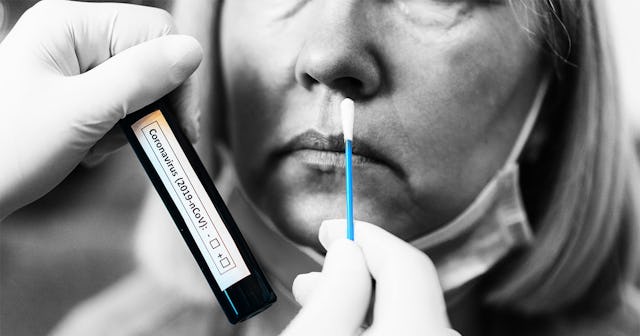11 Things To Do When You Test Positive For COVID-19

Let’s start with the obvious: COVID is pretty freaking scary. Anyone who says otherwise is uninformed or full of shit. Sure, most people who get COVID don’t get seriously ill or end up hospitalized. But many do. And plenty of young and otherwise healthy adults – and even kids – have gotten really sick or died. So yeah, it’s scary to think about getting it. It’s even scarier to get it.
If you do test positive for COVID-19, there are certain things you can do, however, to protect yourself and others. Before we get to that, though, let’s talk about what to do after you get your COVID test and before you get your test results. I can’t believe this even needs to be said, but after you’ve gotten your test you need to sit your ass at home.
Seriously, do not leave your home. Even if you think it’s just a cold. Even if you got tested “just as a precaution.” Even if you feel completely fine. Do not go anywhere until you get your test results. No, not even to the grocery store. Not to the office. Not to your sister’s house to drop off some holiday cookies. NOWHERE.
If you do test positive for COVID, you might be a little confused about what to do.
Here are a few suggestions:
1. Take a deep breath and stay calm.
A positive COVID test result likely comes with a mix of emotions. So take a deep breath and read on.
2. Isolate at home.
That’s right, just like while you were waiting for your results, you sit your ass at home and DO NOT LEAVE.
3. Call your kids’ school.
Members of your household will also need to quarantine, so you’ll need to call your kids’ school and your employer to let them know that you won’t be in for at least 10 days.
4. Call your primary health care provider.
You will also want to call your kids’ pediatrician to inform them of the diagnosis and to see if they have any protocols or recommendations to be followed.
5. Consider getting a pulse oximeter.
bodnarchuk/Getty
A pulse oximeter is an electronic device that measures heart rate and oxygen saturation in a person’s blood. While there is some debate about whether everyone needs a pulse oximeter, doctors say the benefits are clearest for patients who have a cough, fever, and/or shortness of breath. If you do use a pulse oximeter, levels of 95-97% are considered normal. If you are below 95%, you may want to call your doctor. And if levels get to 90% or below, go to the emergency room.
5. Stock up on other supplies.
You’ll want some basic supplies on hand for your isolation period, including things like: fever-reducing medication, thermometer, gloves, face masks, tissues, disinfecting supplies, and hand sanitizer. You can get these supplies delivered or ask a friend to drop them off at your door. Do not go to the store to get these things yourself.
6. Don’t forget about self-care supplies.
Ask a friend to drop off some magazines or order some bath salts with Amazon Prime.
8. Keep track of symptoms.
In her IG post, Megan McNally recommends keeping a symptom journal to track your temperature and pulse oximeter readings.
9. Rest.
If you’re able to, you might want to try proning – lying on your stomach with a pillow under your belly – for periods of time. Doctors have found that proning can increase the amount of oxygen that gets into your lungs.
10. But don’t stay in bed too long.
“You don’t want to overwork yourself but avoid strict bed rest – we don’t want patients to be totally sedentary because we know that patients who move around seem to do better,” Roger Alvarez, a pulmonologist and professor of clinical medicine at the University of Miami’s Miller School of Medicine, told NPR. Alvarez has also recovered from a case of COVID-19.
11. Drink lots of fluids.
Non-caffeinated fluids are important for preventing dehydration, which can be serious enough to result in a trip to the hospital.
11. Remind everyone you know to wear a mask and social distance.
Yes, there are vaccines. But masking and social distancing are still necessary to keep you and others safe. So spread the word.
Be well.
Information about COVID-19 is rapidly changing, and Scary Mommy is committed to providing the most recent data in our coverage. With news being updated so frequently, some of the information in this story may have changed after publication. For this reason, we are encouraging readers to use online resources from local public health departments, the Centers for Disease Control, and the World Health Organization to remain as informed as possible.
This article was originally published on